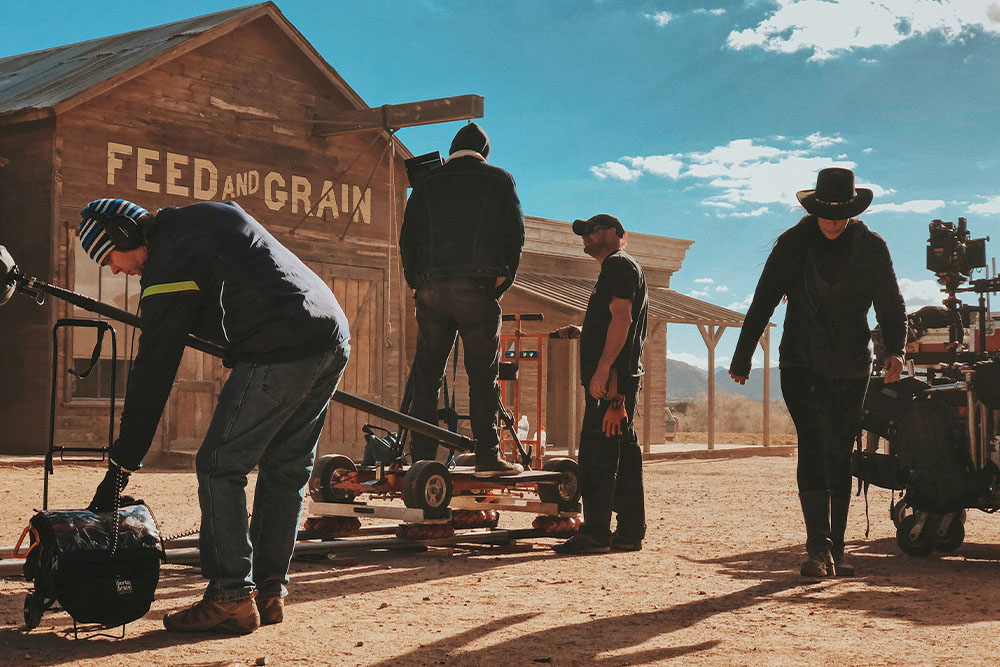Camera Movement
While choosing different shot sizes and angles helps shape how a scene looks, moving the camera during filming adds an extra layer of emotion, energy, or meaning. Camera movement can guide the viewer’s attention, make scenes feel more dynamic, and help tell the story in a more engaging way.
Panning
A pan is when the camera turns left or right while staying in the same position. The camera is usually mounted on a tripod, and only the top part (the head) is rotated. This is similar to standing still and turning your head from side to side. Pans are often used to follow a character’s movement across a space or to slowly reveal parts of a setting.

Photo by Chris Murray on Unsplash.
Tilting
A tilt works much like a pan, but instead of moving side to side, the camera moves up or down. The camera remains fixed in place, but the lens points higher or lower to follow a subject or reveal more of the scene. Tilting is often used when a character is climbing, falling, or when the director wants to show the height or depth of something in the frame.
Tracking Shots
A tracking shot involves moving the entire camera smoothly through space, usually using tracks, a dolly, or another stabilised system. This allows the camera to follow characters as they walk or run, move alongside vehicles, or weave through busy scenes. Tracking shots help the audience feel like they are moving with the action, creating a sense of presence and realism.
Prev Page